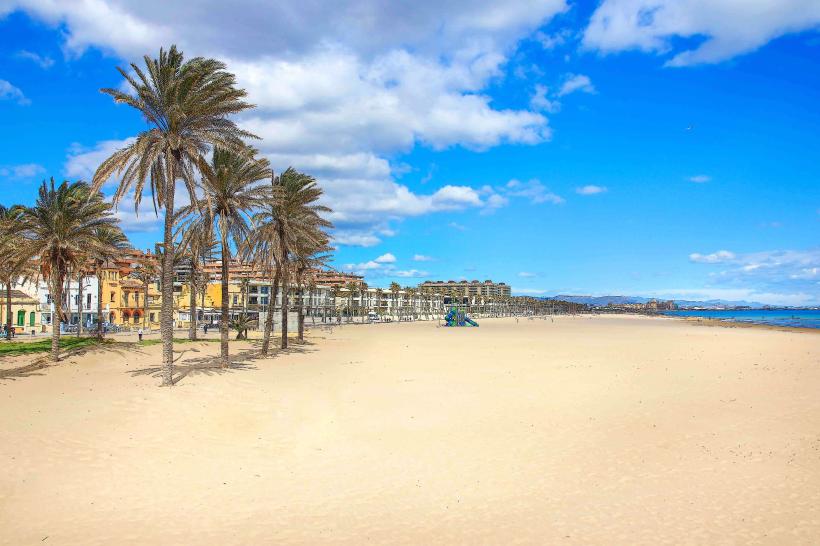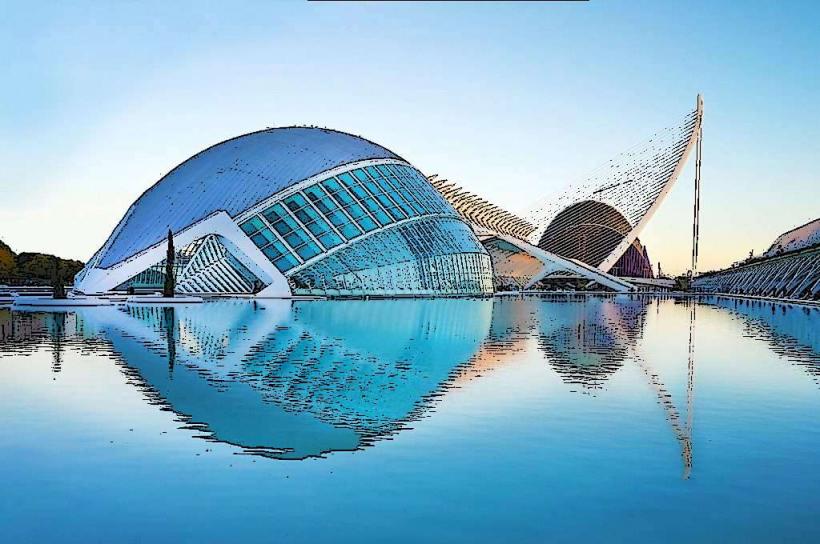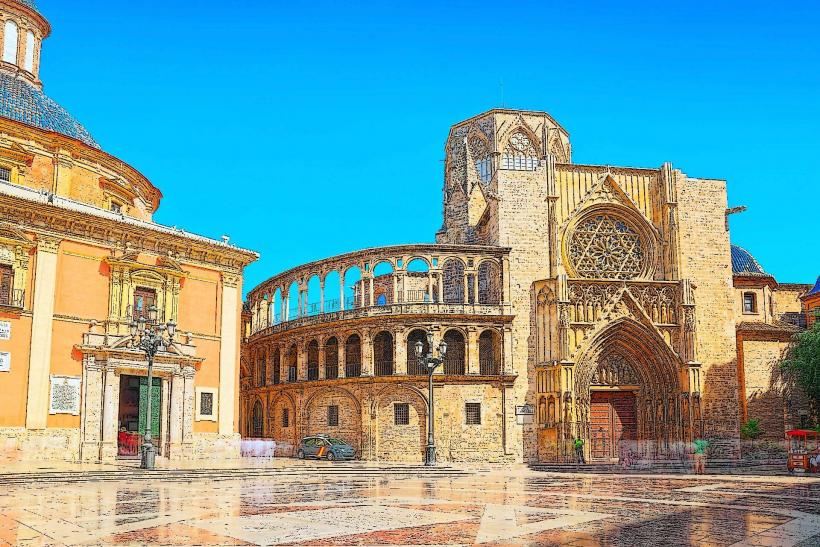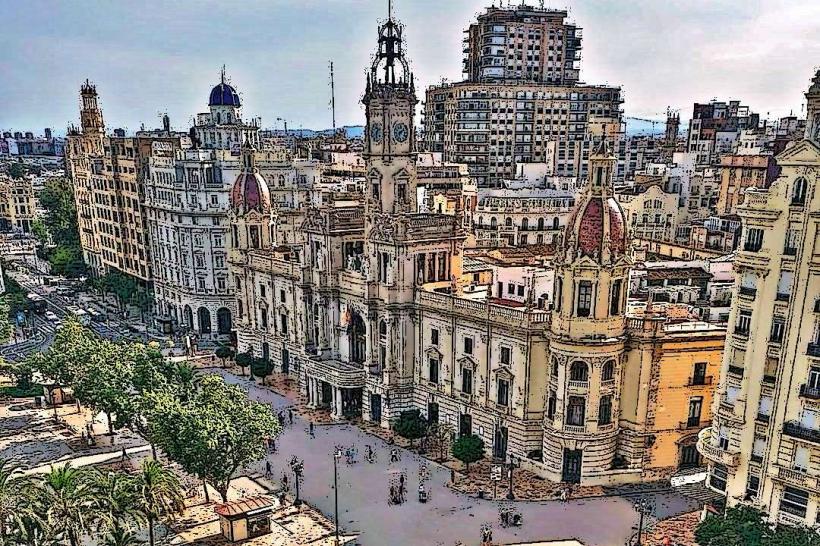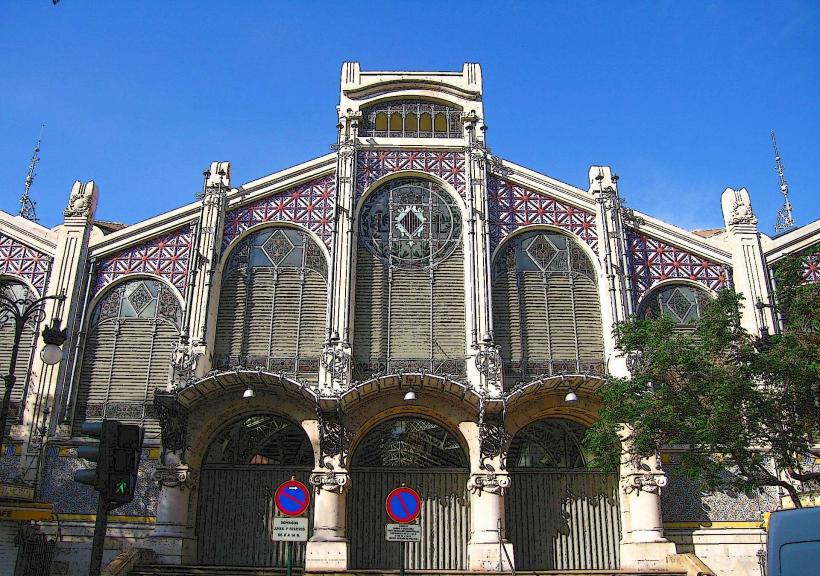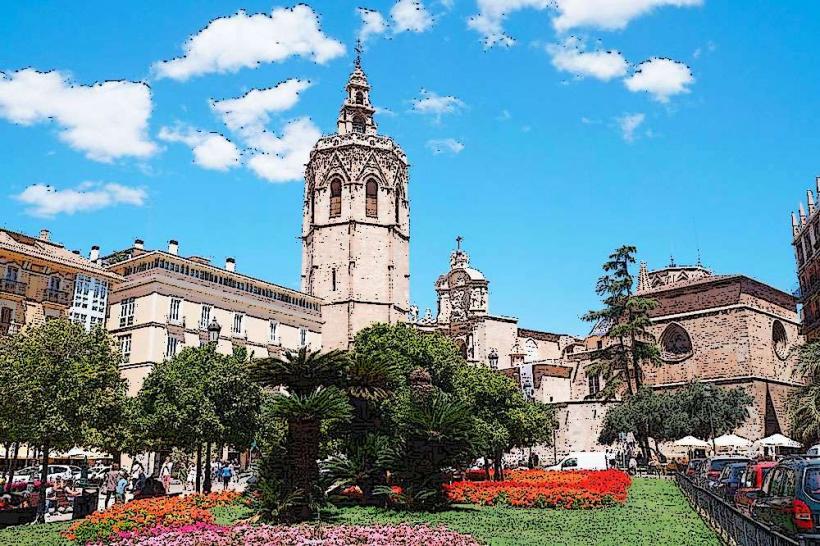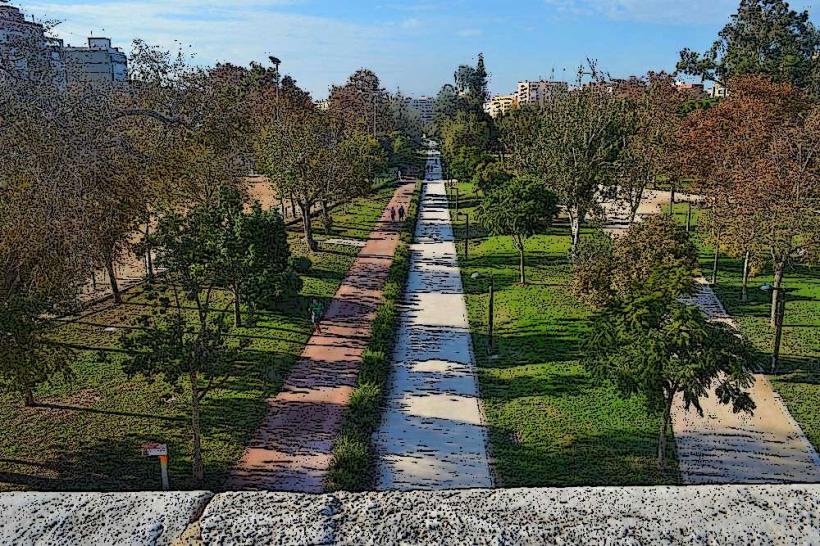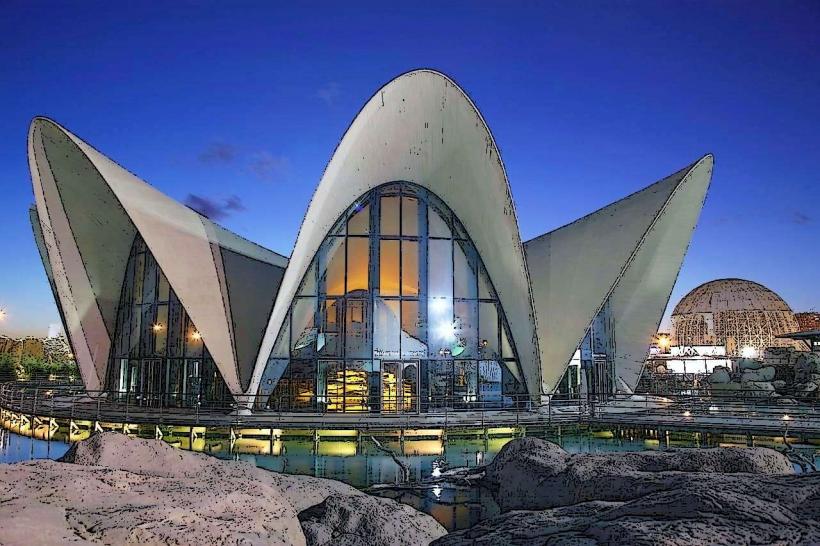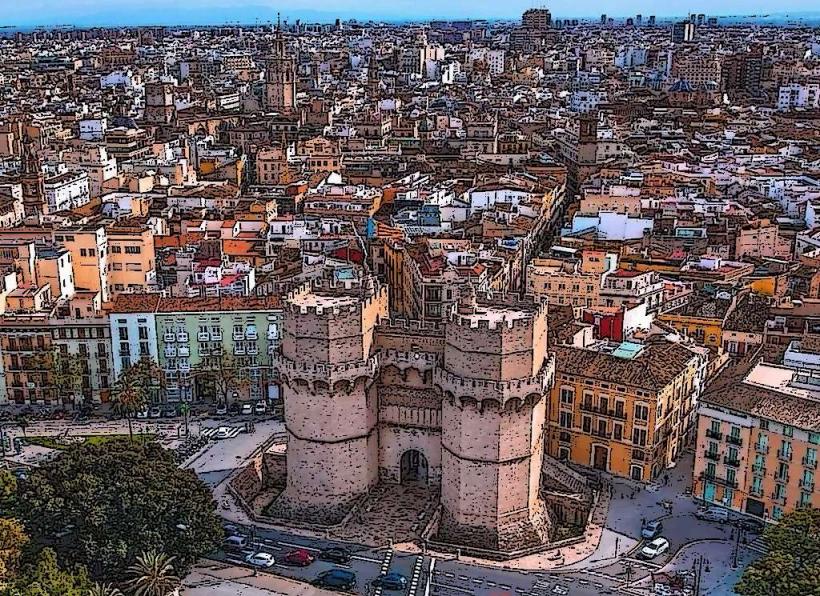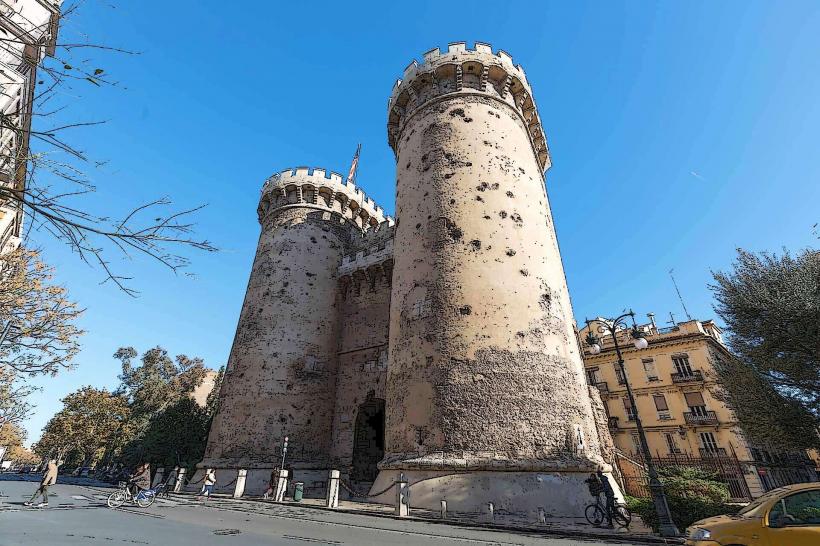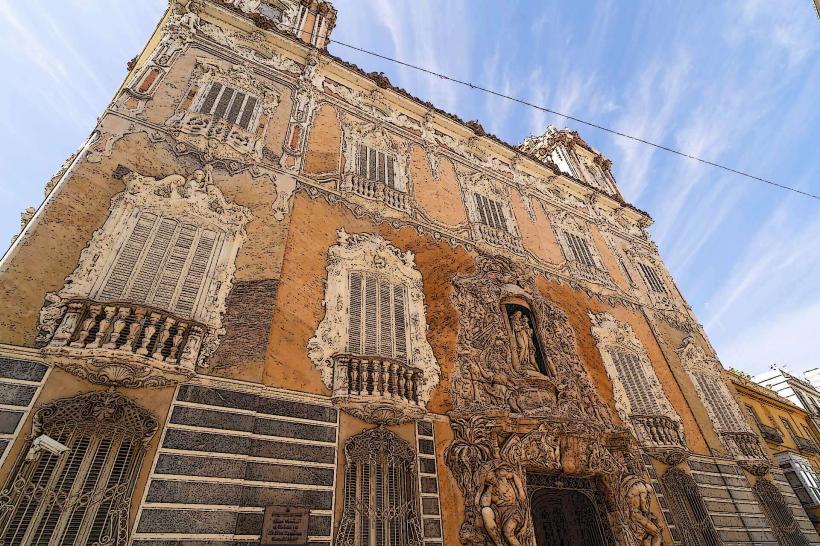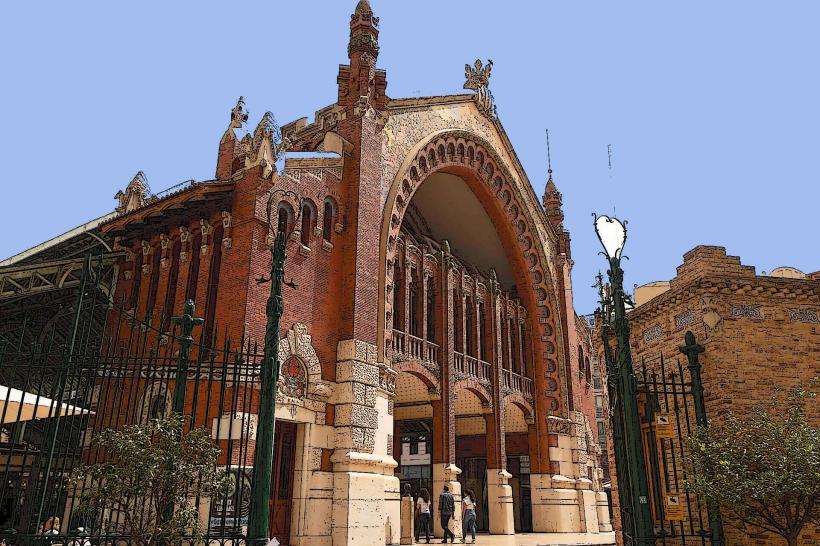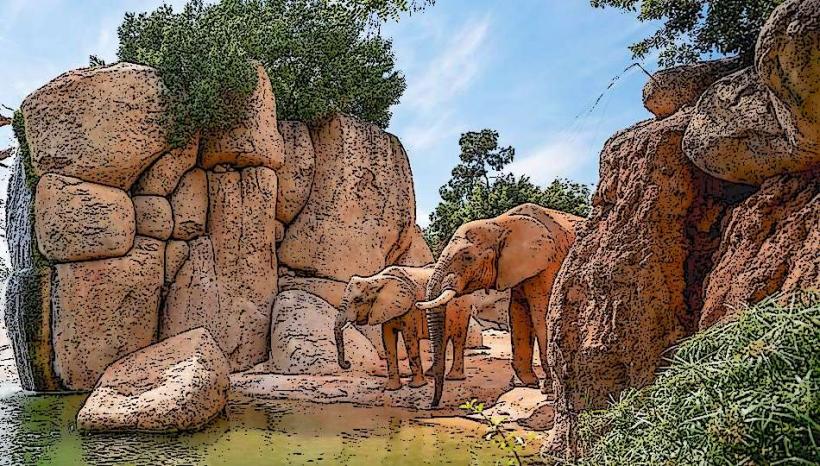Information
Landmark: La Lonja de la SedaCity: Valencia
Country: Spain
Continent: Europe
La Lonja de la Seda (The Silk Exchange) in Valencia, Spain, is one of the most important and well-preserved examples of Gothic architecture in Europe and is a UNESCO World Heritage Site. It is a remarkable historical building that reflects Valencia's wealth and power during the 15th century, when the city was a major trading hub, particularly in silk production.
History and Purpose
Construction: La Lonja de la Seda was built between 1482 and 1548 to house the silk trading market of Valencia. The building was commissioned by the City Council of Valencia to reflect the city's economic prosperity and its role as a leading center for the silk trade in Europe. During the Middle Ages, Valencia was one of the most significant silk-producing regions, and the market played a central role in the city’s economy.
Function: As a silk exchange, La Lonja was the focal point for commercial activity in the region, where traders would gather to buy and sell goods, especially silk. The exchange also hosted meetings and other commercial negotiations. The building’s design was created to accommodate these needs, with large halls and open spaces for trading.
Architectural Features
Main Hall (Sala de Contratación):
- The Sala de Contratación is the most impressive and largest part of La Lonja, designed for trading activities. It is a vast, rectangular room with ornate columns that form a vaulted ceiling. The room is particularly famous for its twisting columns, which are inspired by palm trees and symbolized the prosperity of the Valencian silk trade.
- The hall is decorated with detailed sculptures and frescoes that depict scenes of commerce and Valencia’s history, emphasizing the city’s trading prowess.
The Tower (El Torreón):
- The Torreón is a fortified tower that was originally part of the structure, adding a defensive element to the building. The tower provided a commanding view of the surrounding area and housed the municipal archives.
- Today, it serves as an important landmark and offers insight into the medieval fortified architecture of the building. Visitors can climb the tower to enjoy panoramic views of the surrounding historic district of Valencia.
The Courtyard (Patio de los Naranjos):
- The Patio de los Naranjos (Courtyard of the Orange Trees) is an outdoor courtyard surrounded by an arcaded walkway. The courtyard has a tranquil atmosphere, with the scent of orange blossoms filling the air in spring.
- The courtyard originally served as a place for merchants and visitors to rest and conduct informal business, and its arcades were also used for storing goods.
Sculptural Decoration:
- La Lonja is known for its intricate sculptural decoration, with works by famous artists like Francesc Baldomar and Juan de Mena. The walls are adorned with reliefs, including scenes from classical mythology, medieval heraldry, and religious symbols. The vaulted ceilings are also adorned with delicate carvings and frescoes.
Facade:
- The building’s facade is a fine example of Gothic design, with decorative elements such as arches and fluted columns. The facade is designed to evoke power and prestige, highlighting the importance of the silk trade and the prosperity of the city.
Cultural Significance
UNESCO World Heritage Site: La Lonja de la Seda was declared a UNESCO World Heritage Site in 1996, recognizing its cultural, historical, and architectural significance. It is an outstanding example of a Gothic civil building that played a central role in the development of Valencia and the Mediterranean trade routes during the Renaissance.
Symbol of Valencia’s Economic Power: The building represents the golden age of Valencia as a key player in international commerce, especially during the 15th century, when the city dominated the silk trade. It serves as a reminder of the region’s historical significance in both the Mediterranean economy and the broader European trading network.
Visitor Experience
Tours: La Lonja is open to the public, and visitors can explore the building’s magnificent interior and courtyard. Guided tours are available, offering a deeper understanding of the building’s historical context and architectural features.
Exhibitions and Cultural Events: The building occasionally hosts temporary exhibitions, cultural events, and concerts. The Sala de Contratación and the courtyard are sometimes used for art exhibitions or classical music performances, offering visitors the chance to experience the space in a new light.
Opening Hours: The opening hours for La Lonja can vary depending on the season or special events. It is typically open from 10:00 AM to 6:00 PM on weekdays, with reduced hours on holidays. Visitors are advised to check the schedule before planning their trip.
Conclusion
La Lonja de la Seda is not only a beautiful example of Gothic architecture but also a testament to the economic history of Valencia. Its impressive design, with its soaring columns and detailed sculptures, invites visitors to step back in time and understand the importance of silk trade in the city’s past. Whether you are an architecture enthusiast, a history buff, or simply curious about the heritage of Valencia, La Lonja de la Seda offers a glimpse into the cultural and economic significance of this Mediterranean metropolis.

